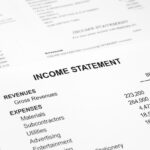Technology Expenses 101: How to Record Cloud Storage, Server Costs & More
Tracking technology expenses can be tricky for any business, but for SaaS and tech companies in general, it can be even more challenging.
In addition to the tech costs associated with the creation and delivery of your products and service, you must also consider your own tech expenses. Tracking and recording can quickly become chaotic if you don’t have a good understanding of how each type of expense should be categorized.
Let’s look at some of the most common IT expenses you’ll incur, how to categorize these costs and the best practices for recording them.
Key IT Expenses and How They Affect Your Bookkeeping
Every business is unique, but there are some key IT expenses that many tech organizations will incur.
Let’s break these down and look at how they may impact your bookkeeping.
Cloud Storage Fees
Tech companies may use solutions like AWS S3, Dropbox Business or Google Cloud Storage as part of their product or service.
The pricing structures for these services will affect your bookkeeping.
- Pay-as-you-go plans are variable expenses that can shift from one month to the next
- Fixed plans are predictable and allow you to better plan for this expense
Additionally, you need to consider whether these fees should be categorized as cost of goods sold (COGS) or an operational expense (OpEx).
If cloud storage fees are related to the creation and delivery of your product or service, then it may be considered COGS.
Server Costs
Server costs are another common expense for SaaS startups and tech companies. These costs can be tricky to categorize and record because it ultimately depends on what type of servers are being used.
- Self-hosted servers are typically considered capital expenses (CapEx). Depreciation will also come into play if you’re purchasing hardware.
- Cloud-hosted servers may be considered a simple operating expense. However, these recurring costs will need to be accounted for and recorded properly.
Software & Licensing Fees
Depending on the nature of your business, you may have your own software and licensing fees to consider in addition to fees associated with your services.
- Subscription-based software SaaS solutions may be categorized as an operating expense or COGS, depending on whether you’re offering the service to clients or using a SaaS solution as part of your operations. If both cases apply, you’ll need to go through each expense carefully to ensure it’s properly categorized based on its purpose.
- One-time software purchases and multi-year licenses are typically intangible assets that can be capitalized and depreciated over time.
How to Categorize Technology Expenses Properly
With a better understanding of common IT expenses, let’s look at how to categorize them properly.
Ultimately, categorization comes down to the purpose and nature of the expense.
- Operating expenses are not directly tied to the production of your goods and services. If you pay for Google Cloud Storage and QuickBooks Online, for example, these would likely be categorized as operating expenses. They are tools you use to run your business – not an expense related to your offerings.
- COGS are expenses directly related to the production or delivery of your products or services (for example, cloud hosting and server fees).
- Tangible, fixed assets, such as hardware, may be categorized as capital expenditures.
SaaS and other tech companies will likely have a mix of both internal expenses and those used for client work. The latter may be categorized as COGS, whereas those for internal operations are more likely to be simple operating expenses.
To ensure proper categorization, analyze each expense carefully and consider its purpose.
Best Practices for Recording and Tracking Tech Expenses
Following the best practices for recording and tracking your technology expenses can help you keep your costs in check and make tax season a little easier.
Here are a few important steps to take.
Automate Tracking
Leverage technology to automate your expense tracking. Tools like QuickBooks Online, Expensify, Gusto and BILL can help you properly categorize your expenses and track them automatically.
Not only will you save time, but you’ll also reduce the risk of errors by taking the automated approach.
Use Separate Categories
Keep your software, cloud-based service and hardware in separate categories to keep things organized.
Keep detailed Records
As a general rule of thumb, it’s good practice to keep detailed documentation of your technology expenses for compliance purposes. Keep your invoices, contracts and other relevant documentation in an easily-accessible place.
Review and Optimize Your Spending Regularly
Your needs and goals will change over time. Make sure that you’re regularly reviewing and optimizing your tech spending to ensure it aligns with your goals and needs.
Final Thoughts
Categorizing and tracking technology expenses can be challenging, but following the best practices above can help you stay on track.
At Redmong Accounting, we know that you have a business to run and expense tracking may not be your top priority. We’re here to help.
Our technology services include expert help with the installation and setup of key expense-tracking software like Expensify or Gusto. Want more in-depth help? We offer virtual accounting and bookkeeping services as well.
To learn more about our technology services or how we can help you with your accounting needs, schedule a consultation now!










